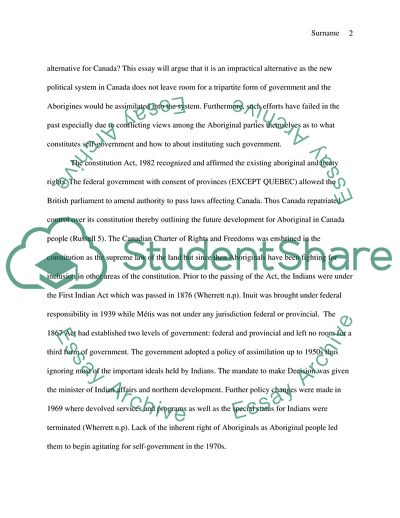Cite this document
(Implementing Aboriginal Self-Government Report Example | Topics and Well Written Essays - 2250 words, n.d.)
Implementing Aboriginal Self-Government Report Example | Topics and Well Written Essays - 2250 words. https://studentshare.org/politics/1811908-whether-the-aboriginals-should-self-government-or-not
Implementing Aboriginal Self-Government Report Example | Topics and Well Written Essays - 2250 words. https://studentshare.org/politics/1811908-whether-the-aboriginals-should-self-government-or-not
(Implementing Aboriginal Self-Government Report Example | Topics and Well Written Essays - 2250 Words)
Implementing Aboriginal Self-Government Report Example | Topics and Well Written Essays - 2250 Words. https://studentshare.org/politics/1811908-whether-the-aboriginals-should-self-government-or-not.
Implementing Aboriginal Self-Government Report Example | Topics and Well Written Essays - 2250 Words. https://studentshare.org/politics/1811908-whether-the-aboriginals-should-self-government-or-not.
“Implementing Aboriginal Self-Government Report Example | Topics and Well Written Essays - 2250 Words”. https://studentshare.org/politics/1811908-whether-the-aboriginals-should-self-government-or-not.


